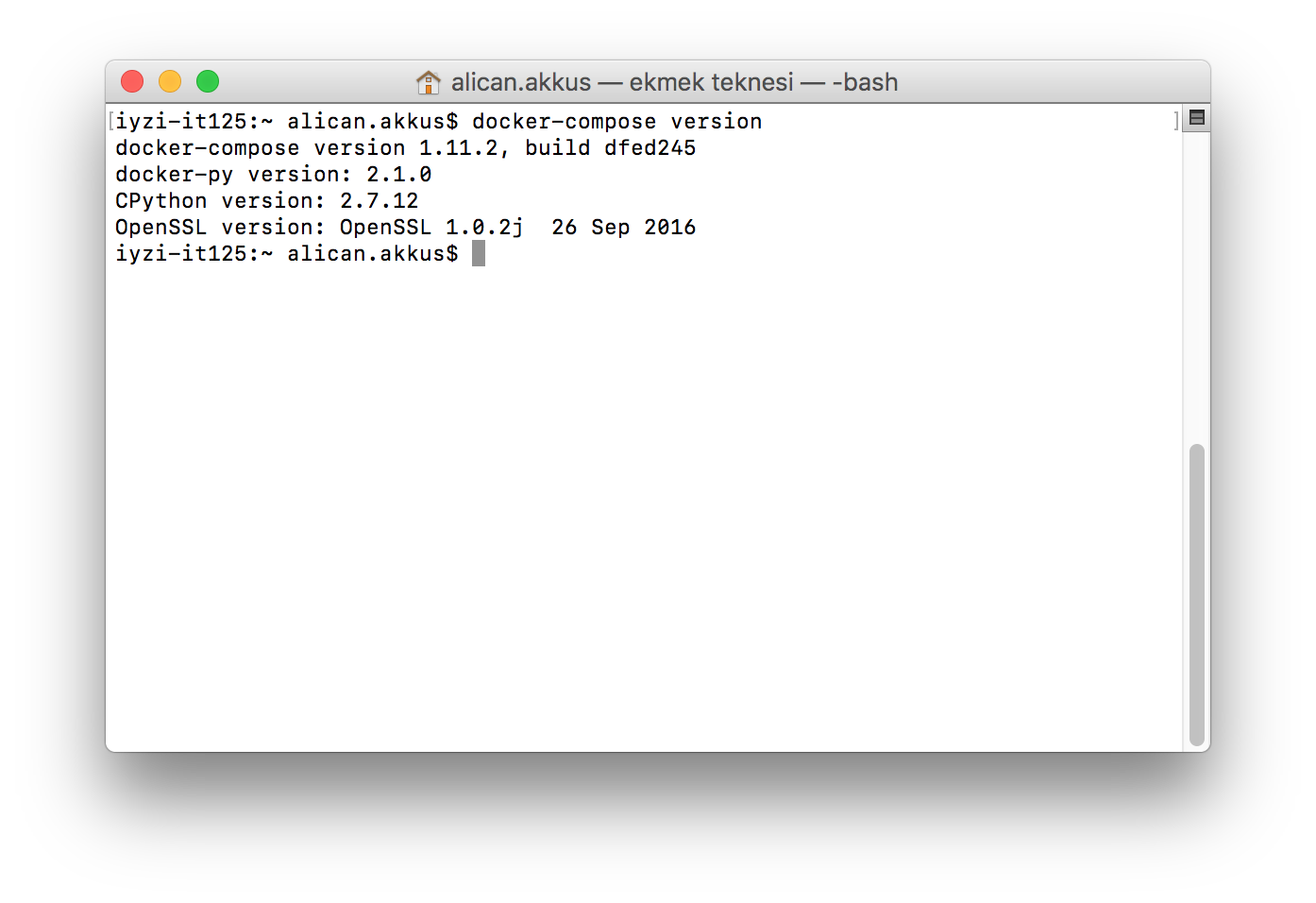This blog explains the purpose of Docker compose build and provide examples of how they help us generate smaller and more efficient Docker Containers.
After you completed this blog you will be able to understand basic of docker compose and how use it.
Docker Compose
In terms, Docker compose that means as the below;
Compose is a tool for defining and running complex applications with Docker. With Compose, you define a multi-container application in a single file, then spin your application up in a single command which does everything that needs to be done to get it running.
Docker Compose is a tool for defining and running multi-container Docker applications. It’s just that.
With Docker compose, we will run more than one containers together and dependent other one. For example, you can define a container for database, web server and cache with depend on db container. In this example we will use the redis.
Note : Docker Compose uses the same API used by other Docker commands((CLI commands)) and tools.
Let’s begin;
We will use the docker-compose.yml configuration file for creating application’s services. It’s simple yaml file. After creating compose configuration file, we will start all the services from configuration with only one command.
Docker compose can be used in many different requirement and/or in many different ways.
- Development environments
- Automated testing environments
- Single host deployments
Firstly learn the version of docker compose on your docker installation as below;

And then listing docker images which installed on docker.

Docker compose was already installed on docker installation.
We have four images. We will use all of them in our docker compose example.
Compose file
Let’s begin to create the compose file. docker-compose.yml
version: '2' #(1)
#(2)
services:
server_a:
image: nginx:latest
ports:
- "8001:80"
server_b:
image: nginx:latest
ports:
- "8002:80"
server_c:
image: nginx:latest
ports:
- "8003:80"
We’ve defined sample configuration file. It’s contains version attribute and service definitions. We can define service at the services section. server_? is the alias name of the service. Image attr is that means which image will be run and ports definitions for the docker container between host.
version means that what version of the docker compose. We’ve using version 2. We will start the all service only via docker-compose up command. Go to docker-compose.yml file directory and run it;

Starting three nginx server and go to localhost:8001 and etc. You can find that nginx up!
If you want to start the docker-compose with detached mode you can do it by giving command;
docker-compose up -d
Let’s check the status of containers;
iyzi-it125:docker alican.akkus$ docker-compose ps
Name Command State Ports
-----------------------------------------------------------------------
docker_server_a_1 nginx -g daemon off; Up 0.0.0.0:8001->80/tcp
docker_server_b_1 nginx -g daemon off; Up 0.0.0.0:8002->80/tcp
docker_server_c_1 nginx -g daemon off; Up 0.0.0.0:8003->80/tcp
iyzi-it125:docker alican.akkus$
Please note that, you can use the all core docker commands with docker-compose such as above.
Containers log can be seen as below;
iyzi-it125:docker alican.akkus$ docker-compose logs
Attaching to docker_server_a_1, docker_server_c_1, docker_server_b_1
server_a_1 | 172.19.0.1 - - [15/May/2017:18:13:34 +0000] "GET / HTTP/1.1" 200 612 "-" "Mozilla/5.0 (Macintosh; Intel Mac OS X 10_12_4) AppleWebKit/537.36 (KHTML, like Gecko) Chrome/58.0.3029.81 Safari/537.36 OPR/45.0.2552.635" "-"
server_a_1 | 2017/05/15 18:13:34 [error] 5#5: *1 open() "/usr/share/nginx/html/favicon.ico" failed (2: No such file or directory), client: 172.19.0.1, server: localhost, request: "GET /favicon.ico HTTP/1.1", host: "localhost:8001", referrer: "http://localhost:8001/"
server_a_1 | 172.19.0.1 - - [15/May/2017:18:13:34 +0000] "GET /favicon.ico HTTP/1.1" 404 571 "http://localhost:8001/" "Mozilla/5.0 (Macintosh; Intel Mac OS X 10_12_4) AppleWebKit/537.36 (KHTML, like Gecko) Chrome/58.0.3029.81 Safari/537.36 OPR/45.0.2552.635" "-"
iyzi-it125:docker alican.akkus$
You can stop docker-compose with below command;
iyzi-it125:docker alican.akkus$ docker-compose stop
Stopping docker_server_a_1 ... done
Stopping docker_server_c_1 ... done
Stopping docker_server_b_1 ... done
iyzi-it125:docker alican.akkus$
Shutdown/Clean up;
- docker-compose down : will remove the containers.
- docker-compose down –volumes : will remove the containers and volumes.
Note : You can see all docker-compose command list by typing docker-compose and output shows as;
iyzi-it125:docker alican.akkus$ docker-compose
Define and run multi-container applications with Docker.
Usage:
docker-compose [-f <arg>...] [options] [COMMAND] [ARGS...]
docker-compose -h|--help
Options:
-f, --file FILE Specify an alternate compose file (default: docker-compose.yml)
-p, --project-name NAME Specify an alternate project name (default: directory name)
--verbose Show more output
-v, --version Print version and exit
-H, --host HOST Daemon socket to connect to
--tls Use TLS; implied by --tlsverify
--tlscacert CA_PATH Trust certs signed only by this CA
--tlscert CLIENT_CERT_PATH Path to TLS certificate file
--tlskey TLS_KEY_PATH Path to TLS key file
--tlsverify Use TLS and verify the remote
--skip-hostname-check Don't check the daemon's hostname against the name specified
in the client certificate (for example if your docker host
is an IP address)
Commands:
build Build or rebuild services
bundle Generate a Docker bundle from the Compose file
config Validate and view the compose file
create Create services
down Stop and remove containers, networks, images, and volumes
events Receive real time events from containers
exec Execute a command in a running container
help Get help on a command
kill Kill containers
logs View output from containers
pause Pause services
port Print the public port for a port binding
ps List containers
pull Pull service images
push Push service images
restart Restart services
rm Remove stopped containers
run Run a one-off command
scale Set number of containers for a service
start Start services
stop Stop services
top Display the running processes
unpause Unpause services
up Create and start containers
version Show the Docker-Compose version information
iyzi-it125:docker alican.akkus$
Note: All of the docker-compose commands may be not running correctly because yaml file is placed the other directory.
İf you want to remove all container you can use the this command;
docker-compose stop
Sometimes we don’t want to run all containers from docker-compose.yml configuration file. We will use partial start as follow syntax -> docker-compose up service_name other_service_name for example;
iyzi-it125:docker alican.akkus$ docker-compose up server_a server_b
Creating docker_server_a_1
Creating docker_server_b_1
Attaching to docker_server_a_1, docker_server_b_1
Let’s connect to container with exec command;
iyzi-it125:docker alican.akkus$ docker-compose up -d server_a server_b
Starting docker_server_a_1
Starting docker_server_b_1
iyzi-it125:docker alican.akkus$ docker-compose exec server_a /bin/bash
root@b9bb8ced17be:/# uname -a
Linux b9bb8ced17be 4.9.27-moby #1 SMP Thu May 11 04:01:18 UTC 2017 x86_64 GNU/Linux
root@b9bb8ced17be:/#
All containers could connect to other via alias name. For example we will use the ping to other server;
iyzi-it125:docker alican.akkus$ docker-compose exec server_a ping -c 3 server_b
PING server_b (172.19.0.3): 56 data bytes
64 bytes from 172.19.0.3: icmp_seq=0 ttl=64 time=0.761 ms
64 bytes from 172.19.0.3: icmp_seq=1 ttl=64 time=0.222 ms
64 bytes from 172.19.0.3: icmp_seq=2 ttl=64 time=0.164 ms
--- server_b ping statistics ---
3 packets transmitted, 3 packets received, 0% packet loss
round-trip min/avg/max/stddev = 0.164/0.382/0.761/0.269 ms
iyzi-it125:docker alican.akkus$
Some containers depends with other one. For example, web application depended with db and cache. Create the new configuration file as below;
version: '2' #(1)
#(2)
services:
db:
image: mysql:latest
volumes:
- db_data:/var/lib/mysql
restart: always
environment:
MYSQL_ROOT_PASSWORD: 1234
MYSQL_DATABASE: challenge
MYSQL_USER: root
MYSQL_PASSWORD: 1234
ports:
- "3306:3306"
app:
image: aakkus/iyzico-challenge
ports:
- "8080:8080"
depends_on:
- db
- redis
redis:
image: redis:latest
ports:
- "6379:6379"
volumes:
db_data:
Outputs looks like below;
iyzi-it125:docker alican.akkus$ docker-compose up -d
WARNING: Found orphan containers (docker_server_b_1, docker_server_a_1) for this project. If you removed or renamed this service in your compose file, you can run this command with the --remove-orphans flag to clean it up.
Creating docker_db_1
Creating docker_redis_1
Creating docker_app_1
iyzi-it125:docker alican.akkus$
app service depended to db and redis. Docker engine, firstly run the depended containers and then run the others.
I hope this blog is useful for you. See you at next posts.
comments powered by DisqusAlican Akkus.
